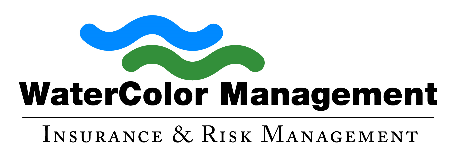
Keeping drinking water clean is essential to preventing illnesses that can pass through human waste or pollutants. For example, Legionellosis occurs when people come in contact with Legionella pneumophila, Legionella dumoffii, or another variation of this species. People can contract Legionellosis by drinking contaminated water or coming into contact with water vapor that contains Legionella microbes. Symptoms include pneumonia, cardiac distress, fever, and gastrointestinal issues. For insurance agents who provide water treatment insurance, staying on top of the best practices for water safety is key to preventing outbreaks of Legionellosis and similar diseases. If it’s been a while, refresh your memory with this risk management crash course.
What Are the Stages of Water Treatment?
Most water treatment facilities use three stages of treatment to reduce their chances of providing contaminated water. In the first stage, the facility removes debris such as toilet paper, plant matter, and sticks with filters and other straining tools. Next, the facility takes care of solid waste by allowing the water to sit and separate into liquids and solids. Once these materials are separated, the treatment team adds a particular microorganism to consume the solid matter.
If an area has particularly clean water, removing the solids with a microorganism may be enough to manage the water treatment facility’s risk. In most cases, though, facilities must also remove medications, phosphorus, and nitrogen from the water. They can use granulated activated carbon or reverse osmosis to provide an extra level of filtration.
What Are the Responsibilities of Water Treatment Facilities?
Your water treatment insurance clients have a responsibility to follow these stages of water treatment carefully. They must regularly test their water to ensure that their filtration systems are working properly and that all their employees know how to complete each phase.
Your clients must also keep up with emerging threats in the wastewater treatment world. For example, contaminants of emerging concern are pollutants or medications that can pass through water and are causing more and more problems. To avoid lawsuits or outbreaks of disease, your clients must keep track of which CECs are common in their area and the best practices for addressing these contaminants.
What Are Other Ways That Water Treatment Facilities Can Handle Their Risk Level?
Even if your clients follow all these guidelines, the risks in water treatment facilities remain high. Hiring experienced water treatment employees is a great way to reduce training times and prevent ignorant mistakes. Holding regular in-service training reinforces the benefits of careful hiring processes.
Additionally, your clients should institute multiple fail-safe procedures on their wastewater treatment programs. For example, two people should conduct the test to see if the water has too much nitrogen and compare their results.
About Watercolor Management
Watercolor Management has insured the water industry for over 30 years. Our policies include unlimited defense cost coverage in the event of a lawsuit against you. Call us at (855) 929-0824 or email info@watercolormanagement.com for a quick quote for your Water Business Professional, Products/Completed operations, Pollution, and General Liability Insurance.




